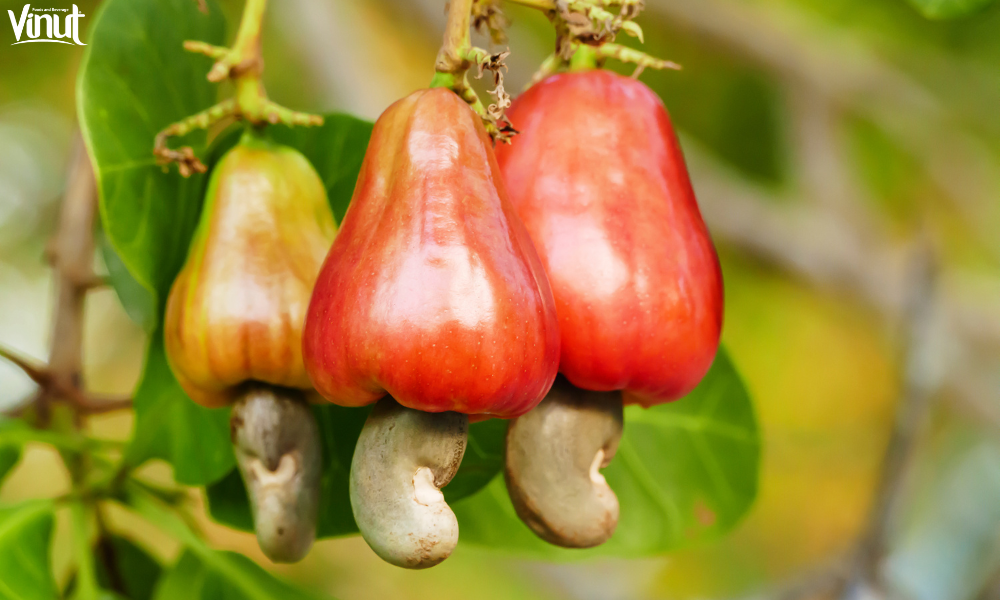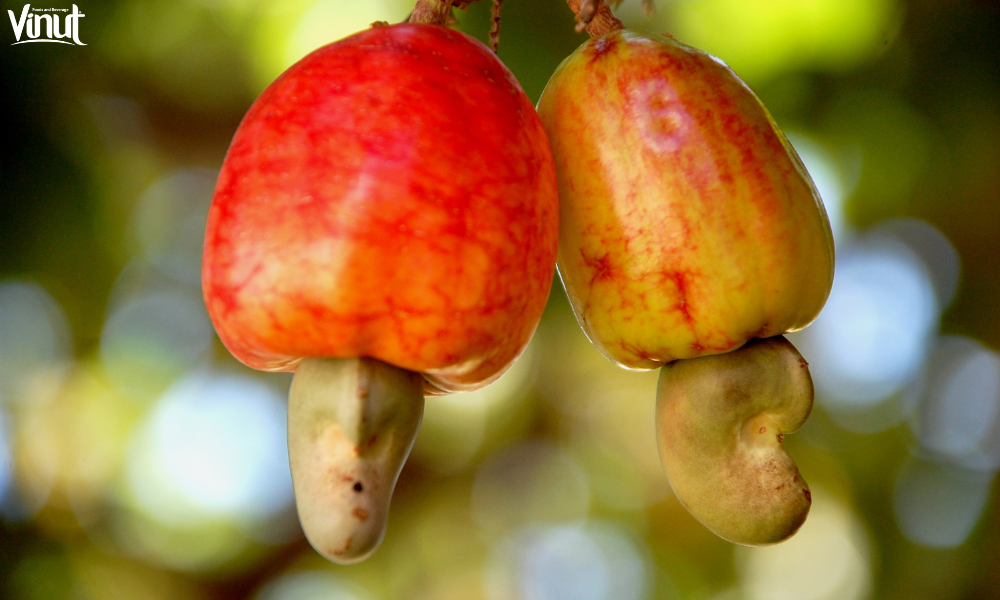Cashew fruit, often overshadowed by its more famous nut counterpart, holds within it a world of flavors and nutrients waiting to be explored. From its vibrant appearance to its unique taste profile, the cashew fruit offers an exotic experience for those willing to delve into its mysteries.
Let’s embark on a journey to uncover the secrets of this fascinating fruit.
What is Cashew Fruit?
The cashew fruit, scientifically known as Anacardium occidentale, is the fruit of the cashew tree, native to northeastern Brazil. This tropical fruit grows on trees that can reach up to 12 meters in height and are known for their evergreen foliage. The fruit is pear-shaped, with a thin, yellow to red skin and a succulent, juicy flesh.

Appearance and Harvesting
When ripe, the fruit displays a vibrant color palette ranging from yellow to red, depending on the variety. It typically hangs from the bottom of the cashew nut, attached to the cashew apple. Harvesting cashew fruit requires careful handling due to its delicate nature and the presence of toxic substances in its shell.
The Taste Experience
Upon the first bite, the fruit offers a burst of tangy sweetness, reminiscent of a blend between mango and pineapple. Its juicy flesh is both refreshing and addictive, making it a popular choice for juices, jams, and cocktails in tropical regions. A subtle hint of astringency enhances the flavor profile, adding depth to its taste.
Culinary Uses
Cashew fruit is a versatile ingredient in culinary applications. In addition to being enjoyed fresh, it can be used to make jams, jellies, and preserves. Its juice is a popular beverage choice, either enjoyed on its own or mixed with other fruits for a refreshing cocktail. Furthermore, the fruit pulp can be incorporated into desserts such as sorbets and ice creams, adding a tropical twist to traditional treats.
Nutritional Value
Beyond its delectable taste, cashew fruit is packed with essential nutrients that contribute to overall health and well-being. It is a rich source of vitamin C, providing a significant portion of the daily recommended intake. Additionally, it contains antioxidants that help combat oxidative stress and reduce the risk of chronic diseases.

Health Benefits
Consuming this fruit may offer a range of health benefits, including improved immune function, enhanced skin health, and better digestion. Its high fiber content promotes digestive regularity, while its vitamin C content supports collagen production for healthy skin. Furthermore, the antioxidants found in it contribute to cellular health and may reduce inflammation in the body.
Cultivation and Sustainability
The cultivation plays a vital role in the economies of tropical regions, providing income for farmers and supporting local communities. However, sustainable practices are essential to minimize environmental impact and ensure the long-term viability of cashew production. This includes responsible water management, soil conservation, and ethical labor practices.
Environmental Impact
Cashew fruit cultivation can have both positive and negative environmental impacts. While the trees help prevent soil erosion and promote biodiversity, unsustainable farming practices can lead to deforestation and habitat destruction. Therefore, growers must adopt eco-friendly methods that preserve natural resources and protect delicate ecosystems.
Exploring Cashew Fruit Around the World
Cashew fruit is cherished in various cultures around the world, each adding its unique twist to traditional recipes. From Brazil to India, the fruit is celebrated for its culinary versatility and nutritional value. Whether enjoyed fresh or incorporated into exotic dishes, cashew fruit continues to captivate taste buds and inspire culinary creativity.

Global Delicacies
In Brazil, cashew fruit is commonly used to make suco de caju, a refreshing juice enjoyed throughout the country. In India, it is used to make feni, a traditional liquor with a distinctive flavor profile. Additionally, cashew fruit is a popular ingredient in Southeast Asian cuisine, where it is used in curries, chutneys, and salads.
Conclusion
In conclusion, cashew fruit is a hidden gem waiting to be discovered by food enthusiasts worldwide. Its unique taste, nutritional value, and culinary versatility make it a standout ingredient in tropical cuisine. From its vibrant appearance to its mouthwatering flavor, cashew fruit offers a sensory experience unlike any other. So, the next time you encounter this exotic fruit, don’t hesitate to indulge in its delicious delights.


 Juice Concentrate
Juice Concentrate Vegetable juice
Vegetable juice Juice Milk
Juice Milk Stand Up Pouches
Stand Up Pouches









